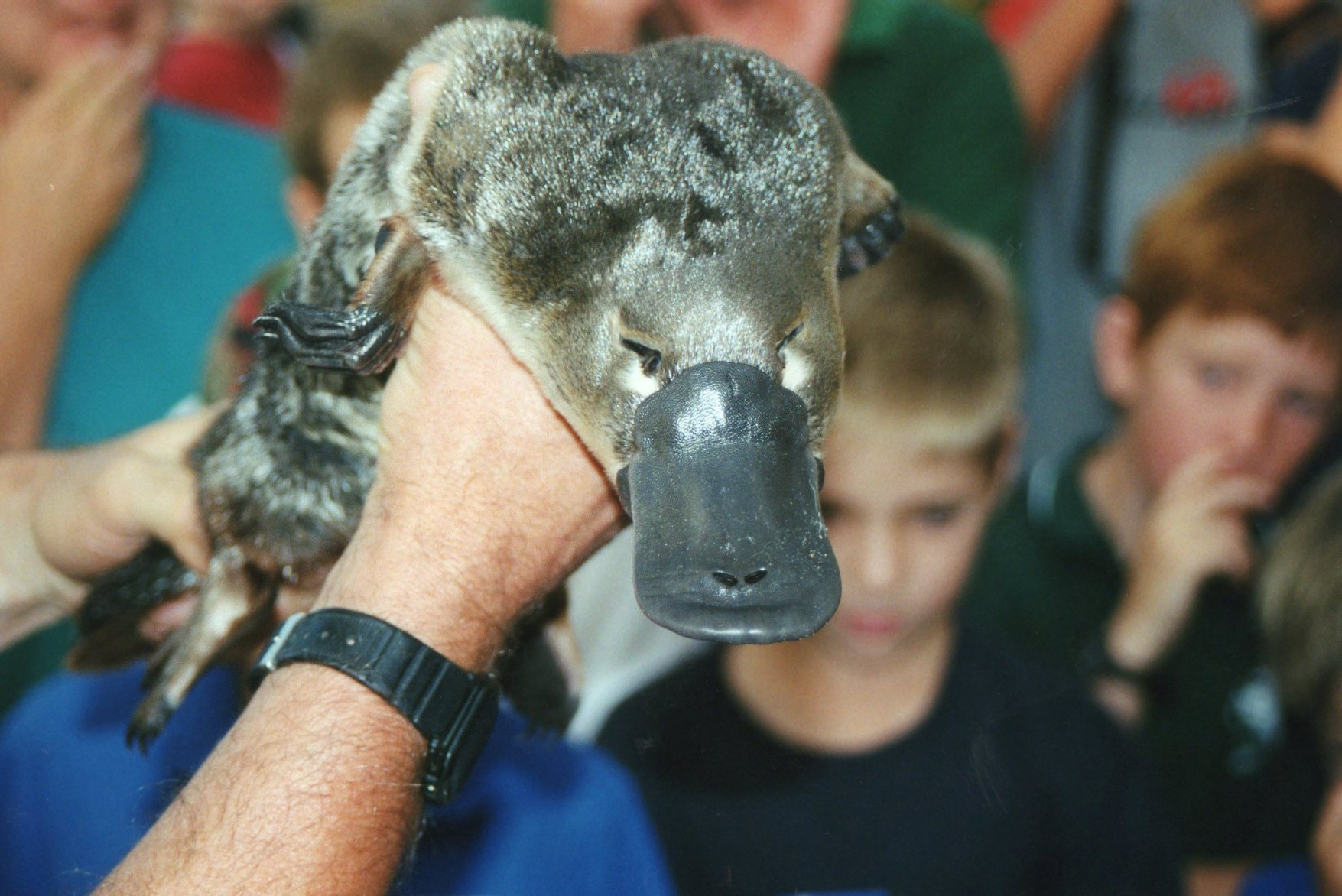
Source: Platypus in Geelong, TwoWings, Wikimedia
In 1800, a stuffed animal arrived in England from the newly discovered continent of Australia.
The continent had already been the source of plants and animals never seen before–but this one was ridiculous. It was nearly two feet long, and had a dense coating of hair. It also had a flat rubbery bill, webbed feet, a broad flat tail, and a spur on each hind ankle that was clearly intended to secrete poison. What’s more, under the tail was a single opening.
Zoologists stared at the thing in disbelief. Hair like a mammal! Bill and feet like an aquatic bird! Poison spurs like a snake! A single opening in the rear as though it laid eggs!
There was an explosion of anger. The thing was a hoax. Some unfunny jokester in Australia, taking advantage of the distance and strangeness of the continent, had stitched together parts of widely different creatures and was intent on making fools of innocent zoologists in England.
Yet the skin seemed to hang together. There were no signs of artificial joining. Was it or was it not a hoax? And if it wasn’t a hoax, was it a mammal with reptilian characteristics, or a reptile with mammalian characteristics, or was it partly bird, or what?